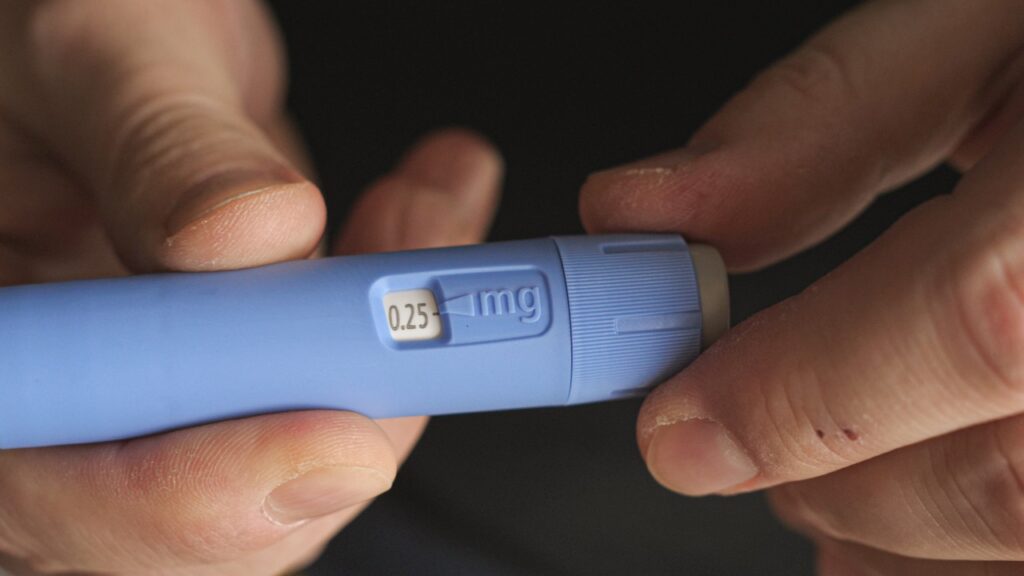Rybelsus vs. Ozempic: Which Over-the-Counter Drug Suits You Best?
Deciding on a medication can be a complex task, given the multitude of similar choices available. Your doctor can help you make an informed decision, but it’s good to have information at your fingertips.
Both Rybelsus and Ozempic are semaglutide-based treatments crafted by Novo Nordisk. So, which one should you opt for? This article aims to answer your questions and provide a comprehensive comparison.
In this piece, we will delve into:
- The essence of Rybelsus
- The essence of Ozempic
- Ingredients in both medications
- Their key distinctions
- Advantages of using either
- Effectiveness comparison between Rybelsus and Ozempic
- Dosage variations
- Their role in managing type-2 diabetes
- Common queries
What is Rybelsus?
Rybelsus is a pill form of semaglutide, specifically engineered for treating type-2 diabetes. It’s a GLP-1 (glucagon-like peptide-1) receptor agonist, sanctioned by Health Canada for approval.
How Does Rybelsus work?
GLP-1 is a hormone that plays a pivotal role in stabilizing your blood sugar levels. Upon eating, your body naturally secretes it, thereby prompting your pancreas to generate insulin and decelerate digestion.
Rybelsus emulates the actions of this hormone, aiding in blood sugar management.
Moreover, various studies indicate that Rybelsus can also be beneficial for weight control when paired with a balanced diet and regular exercise.
What is Ozempic?
Ozempic is a semaglutide injection designed for glycemic control in type-2 diabetes patients. Interestingly, it also helps in weight management for obese individuals (those with a BMI of 27 or higher). It achieves this by modulating hunger signals and slowing down gastric emptying, affecting the types of food you may crave.
Like Rybelsus, Ozempic is most effective when used in combination with a healthy diet and exercise.
Ozempic is also a GLP-1 receptor agonist and functions by mimicking the LP-1 hormone.
Additionally, it has shown promise in reducing the risk of major cardiovascular events, including improvements in high blood pressure, triglycerides, and cholesterol levels.
Ozempic is approved only for those with type-2 diabetes or a BMI of 27 and above.
What’s in Rybelsus and Ozempic?
Both Rybelsus and Ozempic contain semaglutide as their active ingredient. Alongside another semaglutide medication, Wegovy, they function by mimicking the GLP-1 hormone.
For Rybelsus, the tablets also include inactive ingredients like mannitol and magnesium stearate to aid absorption.
Ozempic contains additional ingredients like phenol and water to stabilize the injectable medication.
Novo Nordisk exclusively owns the rights to Ozempic, Rybelsus, and Wegovy.
Rybelsus vs. Ozempic
The primary distinction between Rybelsus and Ozempic lies in their administration methods. They share many similarities in their effects.
Rybelsus is unique as it is an oral medication, suitable for those who dislike injections.
Ozempic, on the other hand, is an injectable form of semaglutide. It requires subcutaneous administration once a week and is available in pre-dosed pens with varying concentrations.
While both have comparable efficacy, Ozempic has shown better outcomes in clinical trials.
Cost-wise, Rybelsus is generally less expensive than Ozempic, although prices can vary based on factors like insurance, location, and pharmacy.
Who Should Use These Drugs?
Both Rybelsus and Ozempic are prescription medications primarily intended for adults with proper prescriptions.
However, these medications are not suitable for everyone. Ozempic has several contraindications, including herbal supplements and vitamins. Rybelsus also has its own set of contraindications. Therefore, it’s crucial to consult your healthcare team before starting either medication.
Both drugs are associated with a risk of medullary thyroid carcinoma (MTC), making them unsuitable for those with a family history of MTC or Multiple Endocrine Neoplasia syndrome type 2 (MEN 2).
Other individuals who should steer clear of these medications include those with type-1 diabetes, a history of pancreatitis, or those planning to conceive.
Both Ozempic and Rybelsus can cause a range of gastrointestinal issues, including nausea, vomiting, constipation, diarrhea, stomach pain, and loss of appetite.
These side effects are most commonly reported when just starting the medication or increasing the dose.
Other rarer but more serious side effects include:
- Changes in vision
- Kidney issues
- Pancreatitis
- Gallbladder issues
- Allergic reactions
Patients need to be vigilant and monitor for these symptoms while using the medication.
If any of these more serious side effects occur, you should stop your use of the drug immediately and contact your medical team, or go straight to your local ER.
Benefits of Using Rybelsus or Ozempic
While each individual needs to discuss the benefits vs. risks with their medical team, both Rybelsus and Ozempic have been shown to have a variety of benefits for patients. These include lowering blood sugar levels, aiding with weight management, and reducing the risk of heart disease.
Lowering Blood Sugar Levels
Both Rybelsus and Ozempic have been shown to be effective at lowering blood sugar. They are GLP-1 receptor agonists, which means they mimic the action of the GLP-1 hormone.
This hormone stimulates the pancreas to produce insulin when blood sugar is high, and slows gastric emptying to prevent blood sugar spikes after eating.
This helps patients achieve their A1C goals, reducing the risks that go along with long-term hyperglycemia.
Managing Weight Loss
Both medications have been shown to have potential to aid with weight management, thanks to the appetite suppressant qualities of GLP-1 receptor agonists.
The appetite suppression caused by delayed gastric emptying means that patients can have a reduced caloric intake, which leads to improvements in weight management over time. Combining this with a healthy diet and exercise yields better results than simply taking either drug on its own, nor is this recommended.
Reducing the Risk of Heart Disease
Heart disease is a significant concern for people with diabetes, as they are at a higher risk for heart attacks and strokes. Research shows that Ozempic and other GLP-1 agonist drugs can reduce the risk of major cardiovascular events, including heart attack, stroke, and death.
Semaglutide-based medications like Saxenda can also contribute to reducing the risk of heart disease by aiding in weight loss, as obesity is a well-known risk factor for heart disease.
Thus, both medications present a viable alternative to other available treatments, such as bariatric surgery.
Is Rybelsus as Effective as Ozempic?
While both medications contain semaglutide, their effectiveness varies. However, Ozempic, the injectable form of semaglutide, has proven to be more effective than Rybelsus. This could be because Ozempic is available in higher doses. The highest oral dose of Rybelsus is equivalent to the 0.5 mg dosage of Ozempic, which is the second-lowest dosage available.
Dosage Differences Between Rybelsus and Ozempic
The dosage for Rybelsus and Ozempic differs significantly due to their different forms of administration. Your doctor will provide prescriptions with the appropriate dosage based on your condition.
Rybelsus is usually initiated at a 3 mg dose once daily for the first 30 days. After this period, the dosage is increased to 7 mg daily.
Depending on tolerance, the dose may be further increased to a maximum of 14 mg daily.
Ozempic starts at a dose of 0.25 mg, administered subcutaneously once a week. After four weeks, the dose is increased to a maintenance dose of 0.5 mg weekly. Higher concentrations of 1 mg and 2 mg are also available.
Even though the dosage of Rybelsus sounds much higher than that of Ozempic, this is because oral medications are less effectively absorbed than injections. In fact, the highest oral dose of Rybelsus, 14 mg, is comparable to the 0.5 mg weekly dose of Ozempic.
There is currently no Rybelsus dosage that matches the 1 mg and 2 mg doses of Ozempic.
How Effective are Ozempic and Rybelsus in Treating Type-2 Diabetes?
Both Rybelsus and Ozempic have proven to be effective in managing blood sugar levels in type-2 diabetes patients. Studies indicate that they both reduce A1C and fasting blood glucose levels, aiding in blood sugar control. Neither medication has shown to be inferior to the other in any significant way.
Both have also shown to be beneficial in managing heart disease, a common issue for type-2 diabetes patients. They have also demonstrated positive results in aiding weight management, a risk factor for various health issues.
Switching Between Rybelsus and Ozempic
There’s generally no compelling reason to switch between Rybelsus and Ozempic unless you have a preference for one over the other or there are cost benefits. Your doctor will need to approve the switch and provide new prescriptions.
If you decide to switch, ensure you’re taking the equivalent dose—14 mg of Rybelsus is equivalent to 0.5 mg of Ozempic.
Key Takeaways
Rybelsus and Ozempic are both GLP-1 agonists containing the active ingredient semaglutide. The primary difference between the two is in how they are administered—Ozempic is injected, while Rybelsus is taken orally.
Both medications can cause side effects, primarily gastrointestinal issues like nausea, diarrhea, constipation, and stomach pain.
Patients using either medication should also be vigilant for more serious side effects like kidney issues, pancreatitis, and thyroid tumors, although these are rare.
Choosing between the two will depend on various factors like patient preference, availability, cost, and dosage. Ozempic is available in higher dosages than Rybelsus.
FAQs
What factors should you consider when choosing between Rybelsus and Ozempic?
Your choice should be based on advice from your healthcare team, but some factors to consider include approval, food interactions, and skin types. Other factors to consider include:
- Availability: While there are currently no known shortages, increased demand for Ozempic could lead to a shortage.
- Administration: If you’re needle-phobic, you might prefer Rybelsus, which is taken orally.
- Cost: Rybelsus may be more affordable in certain situations.
- Dosage: Ozempic is available in higher dosages than Rybelsus, making it preferable for those requiring higher doses.
Can Rybelsus and Ozempic be used together?
Since both medications contain semaglutide, they should not be used in combination to avoid the risk of overdose.
If you need to switch, ensure you’re taking the equivalent dose.
Are there any long-term side effects?
The long-term side effects of both medications are still being studied. Most reported side effects are gastrointestinal, including nausea, vomiting, diarrhea, and constipation, which usually subside over time.
However, as GLP-1 receptor agonists, both medications carry a potential risk of medullary thyroid carcinoma (MTC), a rare form of thyroid cancer. They may also be associated with an increased risk of pancreatitis.






